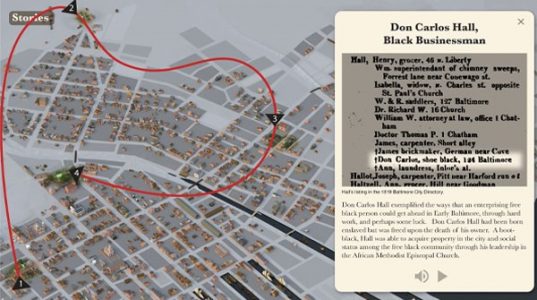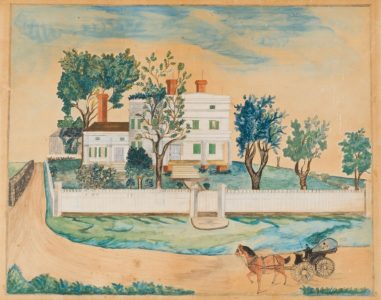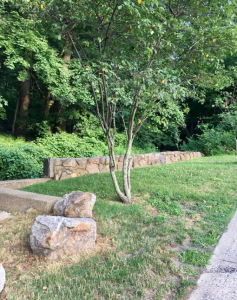
On February 21st, the Atlantic Black Box (ABB) hosted an online film screening of “Fighting Indians” followed by a conversation with filmmakers Mark Cooley and Derek Ellis and Passamaquoddy language-keeper Dwayne Tomah. According to its website, ABB.is a “grassroots historical recovery project that empowers communities throughout New England to research, reveal and begin reckoning with the region’s complicity in the slave trade and the global economy of enslavement while recentering the stories of its Black and Indigenous communities.”
The presentation drew over 250 people which I consider to be a lot. A few days later there was a follow-up conversation which drew 30 people. We divided into 5 groups of six with half my group being from outside Maine.
The impetus for the movie was the decision by the State of Maine passing on May 16th, 2019, An Act to Ban Native American Mascots in All Public Schools, which ABB claims was the first legislation of its kind in the country.
The film “Fighting Indians” chronicles the last and most contentious holdout in that struggle, the homogeneously white Skowhegan High School, known for decades as “The Home of the Indians.” This is the story of a small New England community forced to reckon with its identity, its sordid history, and future relationship with its Indigenous neighbors. It is the story of a small town divided against the backdrop of a nation divided, where the “mascot debate” exposes centuries-old abuses while asking if reconciliation is possible. (ABB)
The framework for the movie was a series of school board meetings, sometimes contentious, where the school board gradually shifted from maintaining the Indian mascot to removing it. The film included the board meetings themselves, interviews particularly with some Wabanaki, historical textual screens about horrific events in colonial times, the Washington Redskins, Buffalo Bill, Indian boarding schools, and a local baseball player Louis Sockalexis who preceded Jackie Robinson by decades and caused the Cleveland baseball team in 1915 to name itself “Indians” in his honor.
The sentiments of the filmmakers were evident throughout.
Here are my thoughts about the film.
FRIDAY NIGHT LIGHTS
Friday Night Lights is a book, movie, and TV series about the place of high school football in a fictional town in Texas (but based on a real one). While its ratings weren’t high, Friday Night Lights became part of American vocabulary for evoking the significance and importance of small-town football in the identity of a community. Part of its appeal was it showcasing its place as part of the very fabric of the community.
Election Results: Amazon versus Hallmark November 27, 2018
Friday Night Lights: Risking Lives for the Dow May 21, 2020
I didn’t get the sense from the filmmakers that they appreciated the role of Friday Night Lights in small-community America. Rather it was somewhat derisive of the Americans with their century old traditions about the high school.
PALEOINDIANS
By contrast the Wabanaki claim of having been in the area for 10,000 years was accepted on face value. For me the claims of having been in the land for 10,000 years demands the same scrutiny as does any other such claims. I do not know if there has been any archaeological work involving Paleoindians in Maine but if there has been it should have been mentioned in the film. In addition, if such people have been discovered, then one would need to substantiate a link between those people thousands of years ago and the Wabanaki today.
Such considerations also lead to the question of the Wabanaki historical legacy. At what point did they start to refer to themselves as having been in the land for 10,000 years. If one were to examine the records from colonial times, would one find reference to a Wabanaki claim to having been in the land for 10,000 years? Was such a claim made in the 17th century? Was such a claim made in the 18th century? Was such a claim made in the 19th century? How about the 20th? It seems to be that the Wabanaki learned this number from Americans and incorporated it into their own heritage stories.
WABANAKI/EUROPEAN-AMERICAN HISTORY
According to the Wabanaki website:
The Wabanaki Confederacy, translated to “People of the Dawn,” was unified in 1606. The confederation was comprised of the principal nations, Abenaki, Micmac, Maliseet, Passamaquoddy and Penobscot. At the time these tribes came from present day Maine and eastern Canada. of the territory that would become Maine in 1820 and eastern Canadian tribes.
The Wabanaki Confederacy played a key role in supporting the colonials of the American Revolution against King George. The Treaty of Watertown of 1776 formalized the relationship. The Treaty was signed by the Micmac and Passamaquoddy tribes, two of the Wabanaki Confederacy’s members. General George Washington expressed his appreciation for the alliance in a letter.
Despite the tribes’ support of the colonials the favor of support was not returned after the war. During the time of the Wabanaki Confederacy (1606-1862) and beyond the Wabanaki people were radically decimated due to many decades of warfare, but also because of famines and devastating epidemics of infectious disease.
This information was not in the film, only the atrocities were. But consider this passage from a book review of Andrea Smalley of Snowshoe Country: An Environmental and Cultural History of Winter in the Early American Northeast by Thomas Wickman (American Historical Review April 2020):
In the First Anglo-Wabanaki War of 1675-1678…the English carried out a preemptive early winter massacre against the Narragansetts, signaling a frightening departure from their previous military tactics. The initial success of [the] colonists’ wintertime attack, however was answered in resounding fashion in both the First and Second Anglo-Wabanaki Wars. Indians employed a brutal attritional winter strategy against the colonists, taking captives, killing livestock, and burning buildings…. Wabanaki independence and autonomy remained generally unscathed throughout the seventeenth century, in large part due to their continued wintertime mobility.
Eventually, the colonists learned the ways of the snowshoe that provided the Wabanaki an edge. They then turned the weapon against the Wabanaki. “English settlers erased from memory the decades-long context for winter power, along with the Native Americans who had once skillfully wielded it.”
It would seem between the snowshoe and the baseball glove/bat, it should be possible to create a better logo in the event one wanted that draws from local history.
According to an article in my local newspaper in New York on October, 12, 2022, most schools in Maine fall short on teaching Wabanaki history. The study by the Maine Department of Education reported that the decades-old law requiring such teaching in the ten school districts was not being fulfilled. The Main Indian Tribal State Commission joined in the report.
WHAT SHOULD BE DONE?
In the Q&A following the screening of the film, I asked about education. I was told that the curriculum is under development. The article from October 2022 gave the same answer I heard in February 2023. What happens when it finally is developed remains to be seen. Will it be integral to the existing curriculum or stand-alone modules that teachers may or may not teach? Will the Wabanaki be treated as separate from American history or as part of American history? Decisions on what to teach in the classroom are made locally in Maine. The state provides resources on its website. I didn’t see anything about the training of teachers once the curriculum is created.
A bigger question is the reconciliation between competing views. During the Q&A and in the breakout session a few days later, I heard mention of civil discourse and of the need to practice when the community is so divided. Such conversations and dialog were considered essential to healing the divide which existed. Did the film contribute to the “reconciliation” ABB mentioned above asking if it is possible.
In this blog I have referred to the film as a “film” and not a “documentary.’ That choice was deliberate. I characterize it as a sermon. My guess based on my limited contact with the audience is that the film was preaching to the choir. It was not an attempt to reach across the aisle or to engage people with the opposite point of view. It evinced no attempt at reconciliation. That would require a different film than the one I saw.










